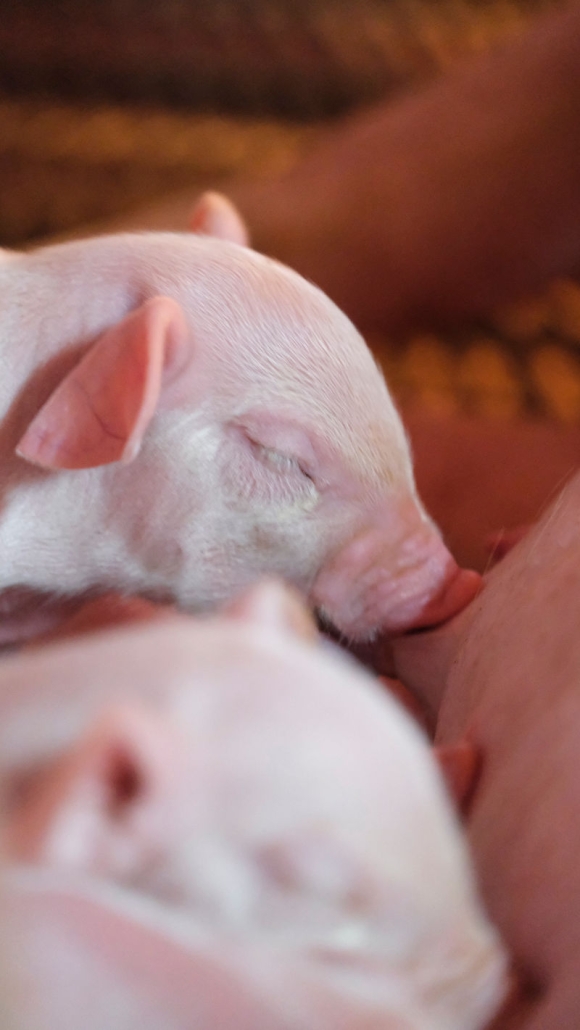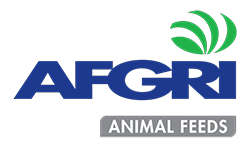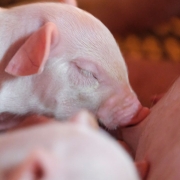Nutrient Requirements of Pigs at Different Life Stages

Ruan Nowers: Technical Advisor, AFGRI Animal Feeds
Feed is one of the most critical factors in producing high-quality animal protein. As pigs grow, their nutritional needs evolve, necessitating a comprehensive understanding of these changing requirements to optimize growth, health, and productivity. Pigs experience several distinct life stages, each characterized by specific physiological changes that demand tailored nutritional interventions.
Below is an overview of the nutritional requirements of pigs from the suckling stage through to the finisher stage, when pigs are ready for slaughter:
1. Suckling/Creep Stage (0 – 4 Weeks)
During the suckling stage, piglets primarily rely on their mother’s milk, which supplies essential nutrients necessary for early growth. Particularly crucial is colostrum, produced in the first few days postpartum, as it contains antibodies vital for immune protection. It is essential to provide lactating sows with nutrient-dense feed to ensure proper milk production and maintain their body reserves for subsequent breeding cycles. A high-quality lactation diet promotes superior milk production, which directly impacts the strength and growth potential of the piglets, setting the foundation for better feed efficiency in later stages.
Nutritional Components of Sow’s Milk:
Protein: The protein in sow’s milk supports the rapid growth of piglets, thanks to its ideal amino acid profile.
Fat: With a fat content of about 7-8%, sow’s milk provides concentrated energy essential for early developmental needs.
Vitamins and Minerals: While milk provides some vitamins and minerals, supplementation with iron is often necessary to prevent anaemia.
During this stage, providing a highly palatable creep feed helps ease the transition from milk to solid feed as piglets approach the weaner stage.
2. Weaner Stage (3-10 Weeks)
Upon weaning, piglets transition fully to solid feed. This period, known as the nursery stage, is crucial, as the piglets must adapt to a new diet. A nutritionally rich weaner diet is essential for minimizing stress and promoting optimal growth. It is important to ensure that the weaner diets are of high quality, as the pigs’ efficiency in converting feed into muscle declines with age, leading to higher feed conversion ratios (FCR), increased feed costs, and reduced profitability.
Nutritional Components of a Weaner Diet:
Protein: High-quality protein sources (e.g., whey, soybean meal) should be included, with 18 – 20% crude protein to support growth.
Energy: Energy requirements increase as pigs grow, with an emphasis on easily digestible carbohydrates and fats. Maize is often a significant component, making up 50-65% of the diet.
Vitamins and Minerals: Increased levels of vitamins A, D, and E, as well as trace minerals like zinc and copper, support immune function and overall health.
3. Grower Stage (10-16 Weeks)
In the grower stage, pigs experience rapid growth and muscle development. Nutritional strategies during this stage focus on sustaining growth while maintaining feed efficiency. As pigs mature, their protein requirements decrease, necessitating a shift towards more energy-dense diets to support feed conversion. An average daily weight gain of approximately 800 grams is expected during this stage.
Nutritional Components:
Protein: Protein requirements typically decrease to around 15-17% crude protein, with attention paid to maintaining optimal amino acid ratios.
Energy: A balanced energy-to-protein ratio is key, with diets comprising a mixture of grains and protein sources to meet energy needs.
Minerals: Adequate calcium and phosphorus levels are crucial for proper skeletal development, in addition to continued vitamin supplementation.
4. Finisher Stage (16-22 Weeks)
During the finisher stage, the focus shifts to maximizing growth rates and feed efficiency, with the goal of preparing pigs for market. Nutritional management at this stage can significantly influence carcass quality and overall profitability.
Nutritional Components:
Protein: Protein needs decrease further to about 13-15%, with a focus on cost-effective feed ingredients.
Energy: Finishing diets are characterized by higher energy density, with increased fat content (up to 6-8%) to promote weight gain without excessive feed consumption.
Vitamins and Minerals: Ongoing nutrient supplementation ensures optimal health and meat quality. A careful balance of trace minerals is essential for achieving desirable carcass characteristics.
Conclusion
The nutrient requirements of pigs vary significantly across different life stages, driven by growth rates, metabolic demands, and dietary transitions. A deep understanding of these changing requirements enables producers to formulate diets that support health, growth, and productivity. Effective nutritional management can lead to enhanced feed efficiency, lower production costs, and improved welfare for pigs throughout their lifecycle.
References
- NRC (National Research Council). (2012). Nutrient Requirements of Swine. 11th rev. ed. Washington, DC: The National Academies Press.
- Pahm, A. A., et al. (2008). “Nutritional Management of the Nursery Pig: A Review.” Asian-Australasian Journal of Animal Sciences, 21(10), 1506-1523.
- Van Milgen, J., et al. (2008). “Nutritional Requirements of Growing Pigs.” Animal Production Science, 48(3), 315-328.
- Stein, H. H., & Shurson, G. C. (2009). “Nutritional Value of Distillers Dried Grains with Solubles for Swine.” Journal of Animal Science, 87(5), 1483-1491. This overview provides insights into the dynamic nutritional needs of pigs at each life stage, emphasizing the importance of tailored feeding strategies to enhance growth and production outcomes.


.png)

